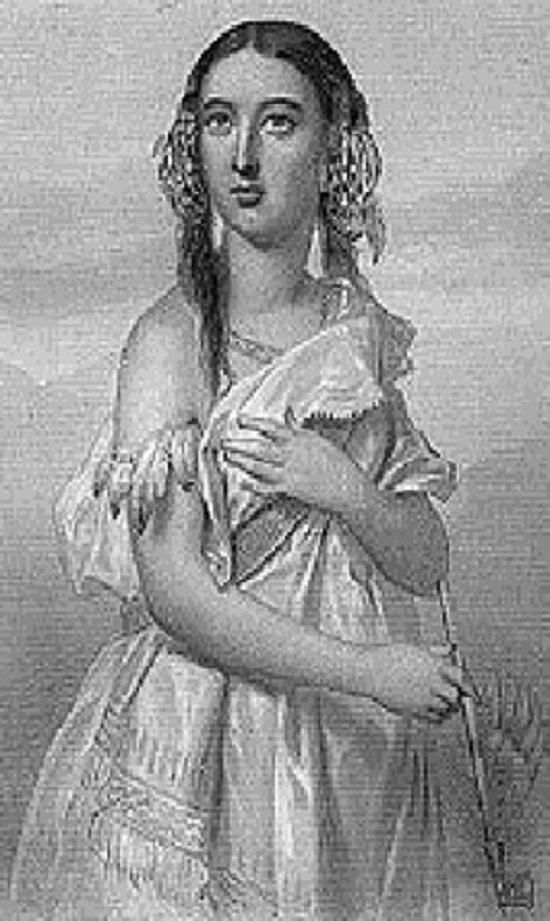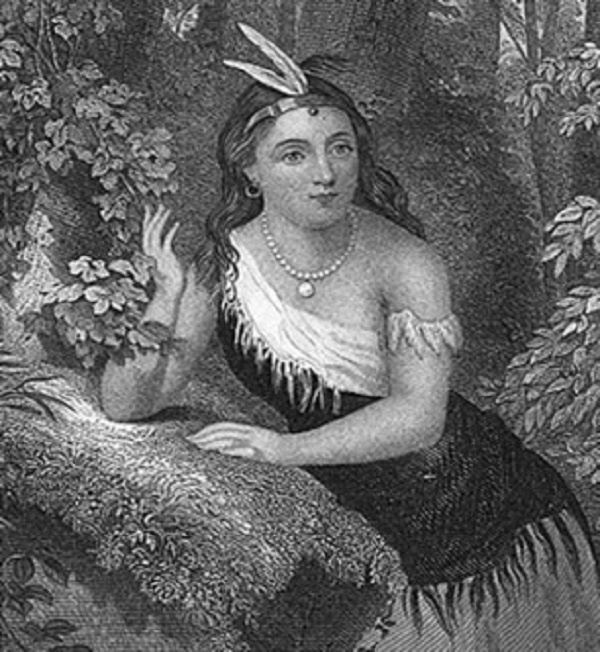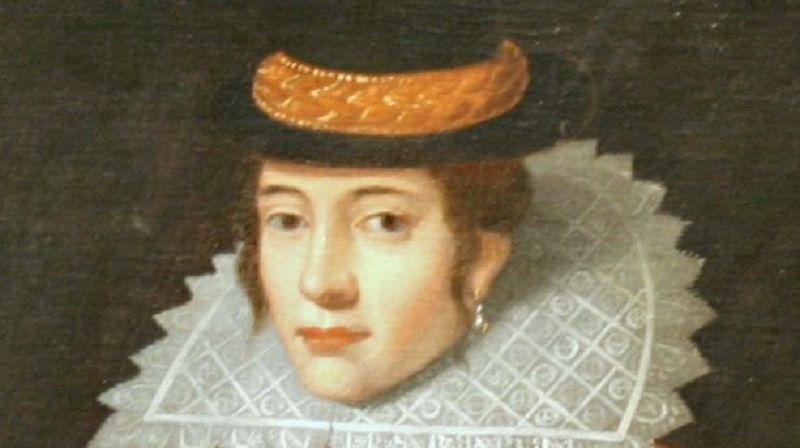
Pocahontas, the famous Native American princess, is an iconic figure in American history and culture. Born in 1595, she was the daughter of Powhatan, the chief of the Powhatan tribe, in what is now Virginia. Her life was marked by her remarkable encounters with English settlers, especially her relationship with John Smith and her marriage to John Rolfe. She played a significant role as a mediator between the settlers and the native communities, and her legacy continues to spark controversy and debates among historians and Native American communities. This article will explore the life and times of Pocahontas, from her early years and family background to her role as a diplomat and ambassador, and how she is remembered today in art, literature, and popular culture.
Early Life and Family Background
Birth and Childhood
Pocahontas was born in 1595 in the Tsenacommacah, a confederation of Powhatan tribes in present-day Virginia. Her birth name was Matoaka, but she was nicknamed Pocahontas, which means "playful one" or "ill-behaved child." She was the daughter of Powhatan, the paramount chief of the confederation, and his first wife, who died when Pocahontas was young.
Family and Tribal Allegiances
Pocahontas was part of an extended family with numerous siblings, half-siblings, and step-siblings. As the daughter of Powhatan, she was considered royalty and was likely groomed for leadership roles within her tribe. Her exact tribal affiliation is uncertain, as the Powhatan were a confederation of tribes with complex political relationships.
Traditions and Customs
Pocahontas grew up in a culture with a deep connection to nature and a strong sense of community. Her tribe had a complex social structure with clans and a matrilineal system of inheritance. Pocahontas would have learned traditional skills such as farming, fishing, and hunting, and would have participated in ceremonies and rituals, including dances and offerings to the spirits.
Encounter with English Settlers
Arrival of English Settlers in Virginia
In 1607, English settlers arrived in Virginia and established the Jamestown colony. The arrival of the Europeans marked a significant change for the indigenous peoples of Virginia, as the colonizers sought to claim land and resources that had been used by the Powhatan for generations.
First Encounter with John Smith
Pocahontas is best known for her interactions with John Smith, an English explorer and one of the leaders of the Jamestown colony. According to Smith's account, Pocahontas intervened to save his life when he was captured by her tribe in 1607, placing her head on top of his to prevent her father from executing him.
Pocahontas as an Intermediary
After Smith's capture and release, Pocahontas became a frequent intermediary between the colonizers and her tribe. She provided food and information to the English, and helped negotiate the release of several English captives. Her role as an intermediary was crucial in maintaining a fragile peace between the two groups.
Relationship with John Smith
Nature of Relationship
The nature of Pocahontas and John Smith's relationship is a matter of debate among historians. While Smith described their interactions as friendly, some have suggested that his account exaggerated her role in saving his life and downplayed the role of her tribe in negotiations with the English.
Smith's Capture and Release
Smith's account of his capture by Pocahontas' tribe and his subsequent release with her intervention has been questioned by some historians, who suggest that it may have been a ritualized adoption ceremony rather than an attempted execution.
Smith's Departure and Pocahontas' Reaction
When John Smith left Virginia in 1609 due to injuries sustained in a gunpowder explosion, his relationship with Pocahontas ended. Pocahontas was said to have been devastated by his departure, and her experiences with the English would continue to shape her life in the years to come.
Marriage and Life with John Rolfe
Reasons for Marriage
In 1613, Pocahontas was kidnapped by the English and held for ransom. During her captivity, she converted to Christianity and met John Rolfe, an English tobacco farmer. The two fell in love and were married in 1614, which helped to solidify a tentative peace between the Powhatan and the English.
The Wedding and Life in Virginia
Pocahontas and John Rolfe's wedding was a significant event in the early history of the Virginia colony. Pocahontas was baptized as Rebecca and was given the English name "Lady Rebecca Rolfe." The couple had a son together and lived on a farm in Virginia for several years.
Journey to England
In 1616, Pocahontas and her family traveled to England, where she was presented to King James I as a symbol of the success of English colonization in Virginia. Pocahontas became ill while in England and died in 1617 at the age of 21. Her life and interactions with the English have become the subject of many myths and legends, but her story continues to be an important part of early American history.
Role as a Diplomat and Ambassador
Pocahontas, known as Matoaka among her tribe, played a significant role in maintaining peace between the English colonizers and Native American tribes in the early 17th century. She acted as a diplomat and an ambassador, translating between the two cultures and aiding negotiations.
Meetings with English Officials
During her time with the English, Pocahontas met with several officials, including John Smith and John Rolfe. Her most notable meeting was with John Smith when she saved his life from execution by her father, Chief Powhatan.
Pocahontas' Views on English Culture and Society
Pocahontas was fascinated by the English culture and their societal norms. She learned their language, adapted to their clothing and customs, and even converted to Christianity after marrying John Rolfe.
The Role of Pocahontas in Maintaining Peace
Pocahontas served as a vital link between the Native American tribes and the English colonizers, facilitating communication and trade. Her diplomatic efforts were crucial in maintaining peace and preventing bloodshed between the two groups.
Legacy and Impact on History
Depictions in Art, Literature and Pop Culture
Pocahontas has been a subject of many works of art and literature. She is also a popular figure in pop culture, with Disney's animated movie "Pocahontas" being the most notable example.
Importance of Pocahontas as a Historical Figure
Pocahontas was a significant historical figure, serving as a symbol of the early interactions between Native Americans and English colonizers. Her legacy has been celebrated for centuries, making her an essential part of American history.
Legacy in Native American Communities
Pocahontas's legacy has been a source of pride for Native American communities. She is a symbol of strength, resilience, and cultural pride. Her story has inspired generations of Native Americans to embrace their heritage and culture.
Controversies and Criticisms
Criticisms of Pocahontas' Depictions and Portrayals
Pocahontas's depictions in popular culture and media have been criticized for being inaccurate and perpetuating harmful stereotypes. Many argue that her story has been romanticized and distorted for commercial gain.
Questioning the Accuracy of Pocahontas' Narrative
Some historians have questioned the accuracy of Pocahontas's narrative. They argue that her story has been embellished and romanticized over the years, making it difficult to distinguish fact from fiction.
Impact of Pocahontas' Story on Native American Communities
Pocahontas's story has had a significant impact on Native American communities. While her legacy is celebrated, there are concerns about how her story is being used to portray Native Americans. Her story has been used to justify colonization and dispossession of Native American land, and many argue that her legacy should be examined in that context.
Remembering Pocahontas through Art and Culture
Pocahontas in Film and Television
Pocahontas has been portrayed in several movies and TV shows, with the most notable being Disney's 1995 animated movie. However, as mentioned earlier, these depictions have been criticized for being inaccurate and perpetuating harmful stereotypes.
Pocahontas in Literature and Music
Pocahontas's story has been the subject of several books and musical works. Authors and musicians have used her story to explore issues of identity, cultural clashes, and history.
Monuments and Memorials Commemorating Pocahontas
Several monuments and memorials have been erected in honor of Pocahontas. The most famous of these is the Pocahontas Memorial at Historic Jamestown, Virginia. This monument was built to commemorate her as a symbol of Native American heritage and a symbol of early American history.In conclusion, Pocahontas was a remarkable historical figure with a complex legacy. Her life and times continue to inspire and fascinate scholars, artists, and popular culture enthusiasts alike. Her story remains a testament to the resilience and strength of Native American communities and their enduring contributions to the history and culture of the United States. Pocahontas will always be remembered as a symbol of cultural exchange, diplomacy, and the power of human connection, despite the many challenges and controversies that surrounded her life and legacy.
Frequently Asked Questions (FAQ)
What was Pocahontas' real name?
Pocahontas was not her real name but rather a childhood nickname that means "playful one" or "mischievous one." Her real name was Matoaka, and she was also known as Amonute.
What happened to Pocahontas' marriage to John Rolfe?
Pocahontas and John Rolfe were married in 1614 and had one son together, Thomas Rolfe. In 1616, they traveled to England, where Pocahontas became ill and died the following year. John Rolfe returned to Virginia with their son.
What was Pocahontas' role in mediating between the settlers and the native communities?
Pocahontas served as an intermediary and ambassador between the Powhatan Tribe and the English settlers, helping to negotiate treaties and resolve conflicts. She also provided valuable cultural insights and facilitated trade between the two groups.
What is the controversy surrounding Pocahontas' legacy?
The controversy surrounding Pocahontas' legacy revolves around the accuracy and authenticity of her story, as well as the ways in which she has been depicted and portrayed in art, literature, and popular culture. Some Native American communities and scholars argue that her story has been romanticized and distorted, erasing the complexities and struggles of native communities during colonization.
-----------------------------
The daughter of a powerful Powhatan Indian Chief in Virginia, she was born in the Tidewater region of Virginia around 1595 and was called Matoaka. However, at an early age she took on the nickname of Pocahontas, meaning "Little-wanton," for her playful and frolicsome nature, and was considered an "Indian Princess" in pop culture.
 Pocahontas probably saw white men for the first time in May, 1607 when the Englishmen landed at Jamestown. One of the first she was to meet was Captain John Smith, who was the leader of the Virginia Colony at Jamestown. Later that year, in December, Smith was leading an exploration along the rivers of Virginia and the Chesapeake Bay when the Powhatan Indians took him captive. Smith would live to tell the romanticized story, which would become legendary. The tale would also come under scrutiny many years later by historians, who question its authenticity.
Pocahontas probably saw white men for the first time in May, 1607 when the Englishmen landed at Jamestown. One of the first she was to meet was Captain John Smith, who was the leader of the Virginia Colony at Jamestown. Later that year, in December, Smith was leading an exploration along the rivers of Virginia and the Chesapeake Bay when the Powhatan Indians took him captive. Smith would live to tell the romanticized story, which would become legendary. The tale would also come under scrutiny many years later by historians, who question its authenticity.
But, as Smith tells it, a few days after his capture, he was taken to the official residence of the Powhatan at Werowocomoco, which was 12 miles from Jamestown. There, the great chief, Wahunsunacawh, welcomed him and offered him a feast.
However, afterwards, several warriors grabbed him, forced him to stretch out on two large, flat stones and stood over him with clubs, as though ready to beat him to death if ordered. Suddenly, in rushed the chief's daughter, little Pocahontas, and took Smith's head in her arms to save him from death. Pocahontas then pulled him to his feet and the chief declared that they were now friends. He then adopted Smith as his son, or a subordinate chief.
Actually, this mock "execution and salvation" ceremony was traditional with the Indians, and if Smith's story is true, Pocahontas' actions were probably one part of a ritual.
Relations with the Indians continued to be generally friendly for the next year, and Pocahontas was a frequent visitor to Jamestown. She delivered messages from her father, accompanied other tribe members food and furs to trade, and spent time visiting with John Smith on her visits.
Unfortunately, relations with the Powhatan and the Jamestown settlers deteriorated. Though necessary trading continued, hostilities became more open. Pocahontas' visits to the fort became much less frequent. In October 1609, a gunpowder explosion badly injured John Smith, forcing him to return to England. When Pocahontas next came to visit the fort, she was told that her friend Smith was dead.
In 1610 Pocahontas living with the Patowameke Indians and was either engaged or briefly married to an Indian named Kocoum and lived in Potomac country. But, her relationship with the Englishmen was not over. When a resourceful member of the Jamestown settlement, Captain Samuel Argall, learned where she was, he devised a plan to kidnap her and hold her for ransom. With the help of Japazaws, a lesser chief of the Patowomeck Indians, Argall lured Pocahontas onto his ship. When told she would not be allowed to leave, she "began to be exceeding pensive and discontented," but, she eventually became calmer and even accustomed to her captivity. Argall sent word to Powhatan that he would return his beloved daughter only in exchange for the English prisoners Powhatan held, some arms and tolls that the Indians had stolen, and some corn. After a while, Powhatan sent part of the ransom and asked that they treat his daughter well. Argall returned to Jamestown in April, 1613 with Pocahontas.
 Pocahontas was eventually moved to a new settlement, Henrico, which was under the leadership of Sir Thomas Dale. Here, she began her education in the Christian faith and met a successful tobacco planter named John Rolfe in July, 1613. Pocahontas was allowed relative freedom within the settlement, and she began to enjoy her role in the relations between the colony and her people. After almost a year of captivity, Dale brought 150 armed men and Pocahontas into Powhatan's territory to obtain her entire ransom. Attacked by the Indians, the Englishmen burned many houses, destroyed villages, and killed several Indian men.
Pocahontas was eventually moved to a new settlement, Henrico, which was under the leadership of Sir Thomas Dale. Here, she began her education in the Christian faith and met a successful tobacco planter named John Rolfe in July, 1613. Pocahontas was allowed relative freedom within the settlement, and she began to enjoy her role in the relations between the colony and her people. After almost a year of captivity, Dale brought 150 armed men and Pocahontas into Powhatan's territory to obtain her entire ransom. Attacked by the Indians, the Englishmen burned many houses, destroyed villages, and killed several Indian men.
They finally sent Pocahontas ashore, where she reunited with two of her brothers, whom she told that she was treated well and that she was in love with and wanted to marry the Englishman John Rolfe. The Powhatan Chief gave his consent to this, and the Englishmen departed, delighted at the prospect of the "peace-making" marriage, although they didn't receive the full ransom.
John Rolfe was a very religious man who agonized for many weeks over the decision to marry an Indian, but, finally made the decision once she had been fully converted to Christianity. Pocahontas was baptized, christened by the name Rebecca, and later married Rolfe on April 5, 1614. A general peace and a spirit of goodwill between the English and the Indians resulted from the marriage.
Sir Thomas Dale made an important voyage back to London in the Spring of 1616. His purpose was to seek further financial support for the Virginia Company. To ensure spectacular publicity, he brought with him about a dozen Algonquian Indians, including Pocahontas, her husband and their young son, Thomas.
The arrival of Pocahontas in London was well publicized. She was presented to King James I, the royal family, and the rest of the best of London society. Also in London at the time was Captain John Smith, the old friend she had not seen for eight years and whom she believed was dead. Smith relates that at their meeting, she was at first too overcome with emotion to speak. After composing herself, Pocahontas talked of old times.
After seven months, Rolfe decided to return his family to Virginia. In March, 1617 they set sail. It was soon apparent, however, that Pocahontas would not survive the voyage home. She was deathly ill from pneumonia or tuberculosis. She was taken ashore, and, as she lay dying, she comforted her husband, saying, "all must die. 'Tis enough that the child liveth." She died on March 21, 1617 and was buried in a churchyard in Gravesend, England at the age of 22.
Pocahontas played a significant role in American history. As a compassionate little girl, she saw to it that the colonists received food from the Indians, so that Jamestown would not become another "Lost Colony." She is said to have intervened to save the lives of individual colonists. In 1616 John Smith wrote that Pocahontas was "the instrument to preserve this colony from death, famine, and utter confusion." Pocahontas not only served as a representative of the Virginia Indians, but also as a vital link between the Native Americans and the Englishmen.
... read more here:
http://www.legendsofamerica.com/